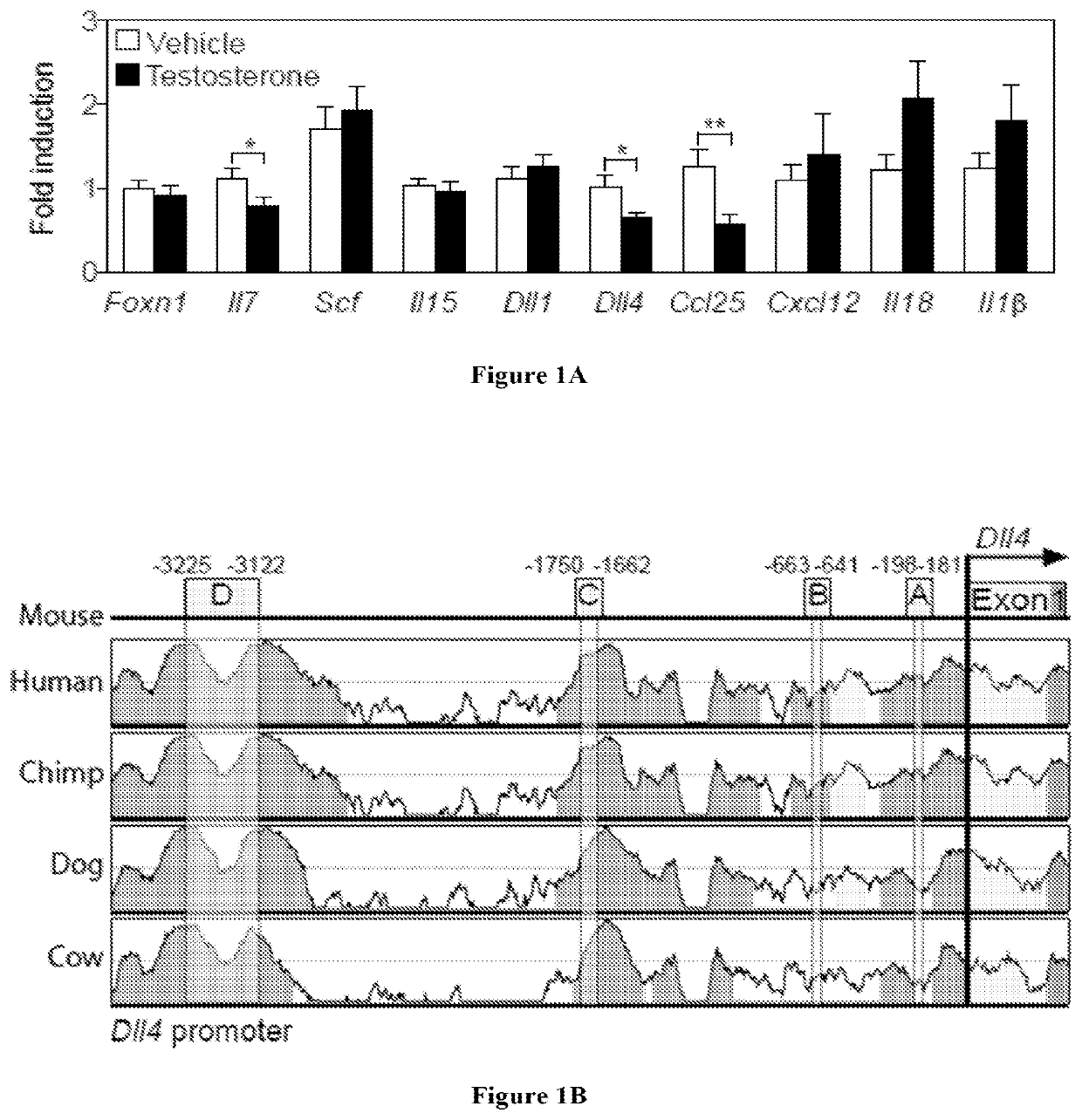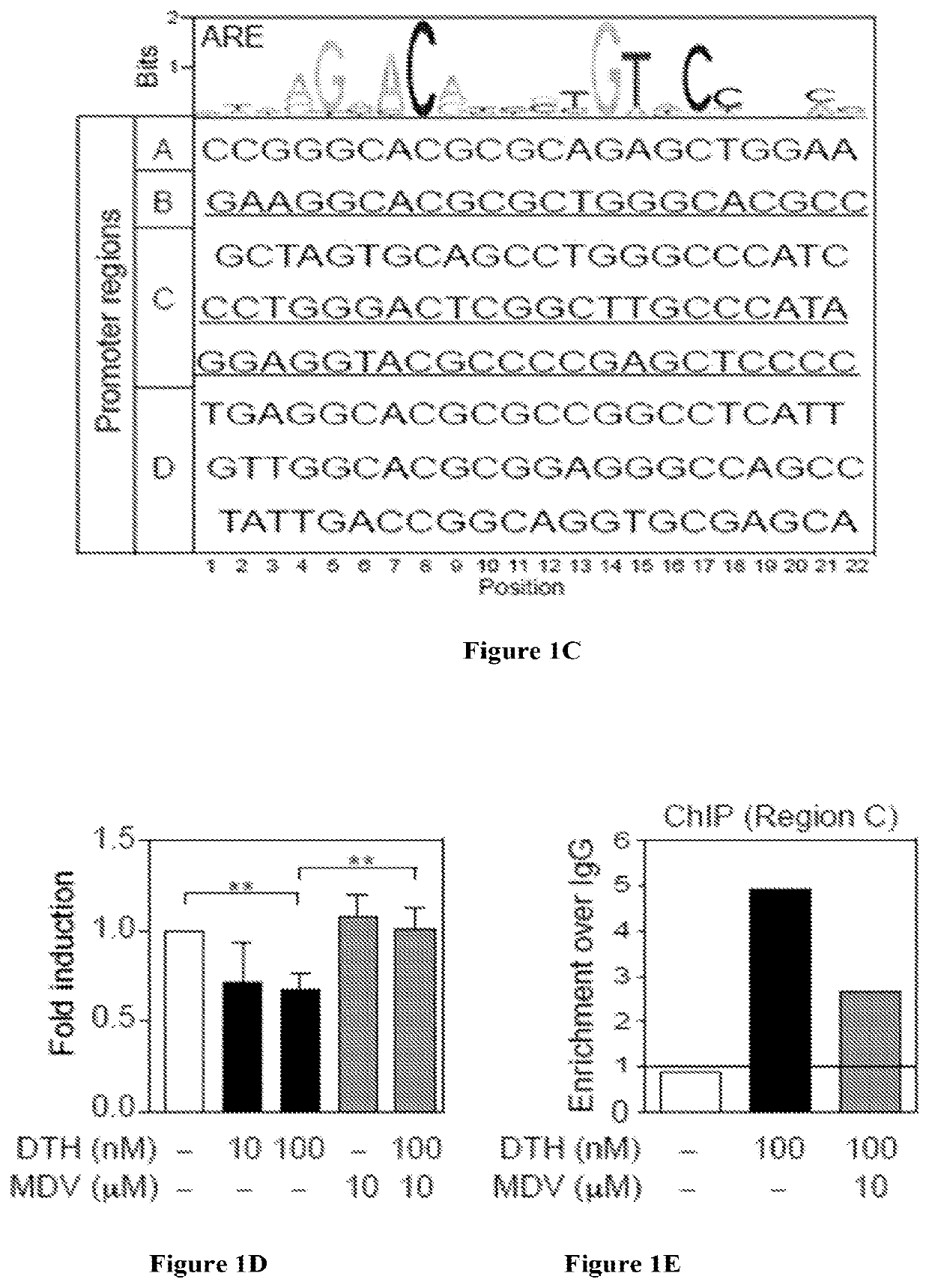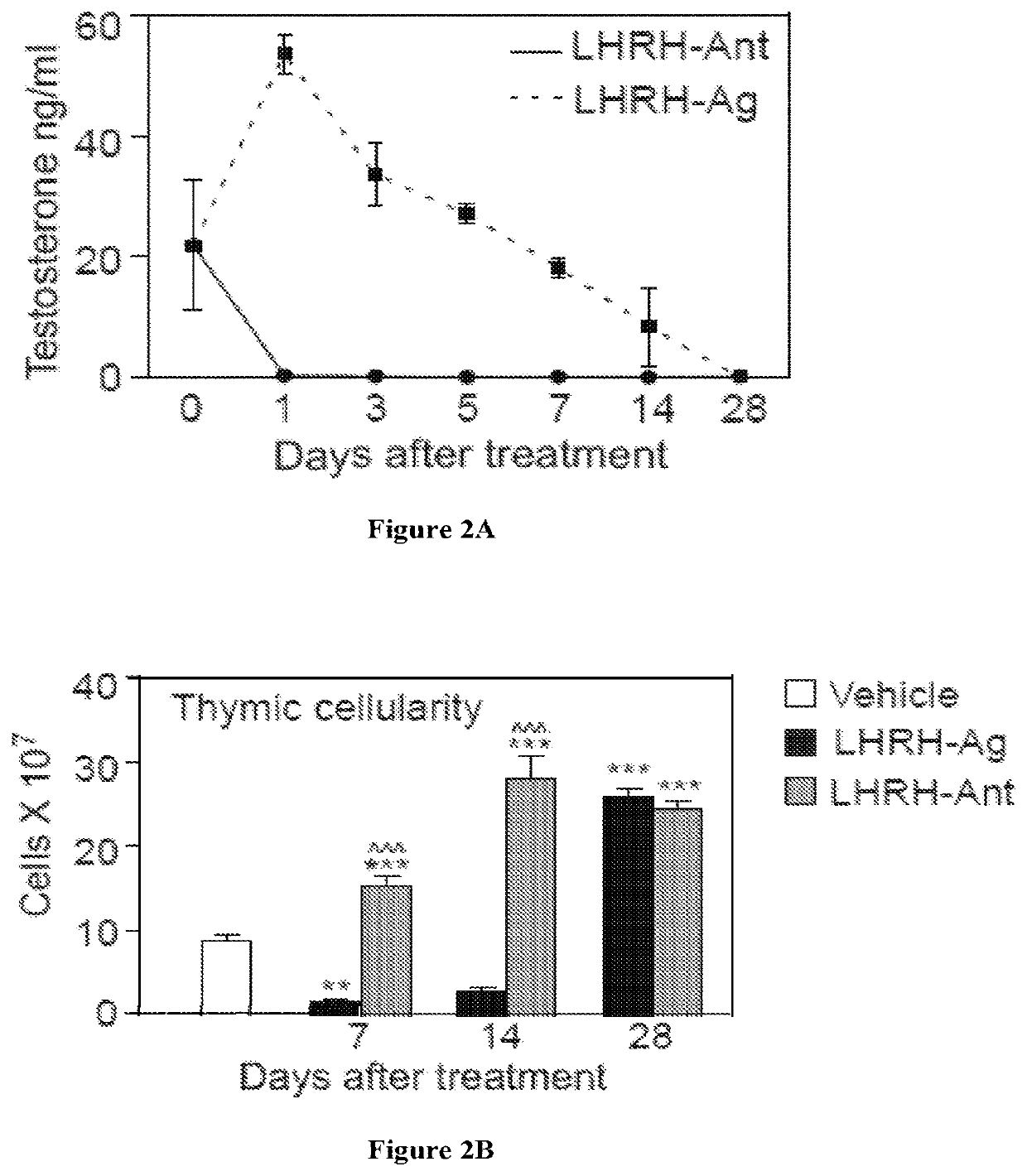Hematopoietic recovery from radiation injury
a radiation injury and hematopoietic technology, applied in the field of hematopoietic recovery from radiation injury, to achieve the effect of facilitating survival and restoring health
- Summary
- Abstract
- Description
- Claims
- Application Information
AI Technical Summary
Benefits of technology
Problems solved by technology
Method used
Image
Examples
example 1
Regulate Thymopoiesis by Direct Transcriptional Control of Notch Ligands
[0119]This example illustrates the discovery that androgens directly control transcription of Notch ligands. Previous studies have demonstrated that expression of androgen receptor (AR) in the thymic stromal compartment is indispensable for thymic rebound after surgical castration (Lai et al., 2013; Olsen et al., 2001). Given the primary role of the thymic stroma in thymopoiesis, we investigated the expression levels of key stromal-derived thymopoietic factors after testosterone treatment to identify candidate genes regulated by androgen signaling. Consistent with previous studies (Goldberg et al., 2007; Williams et al., 2008), we found significant down regulation of Il7 and Ccl25 after androgen treatment (FIG. 1A). We also found significantly lower levels of the Notch ligand Dll4.
[0120]One mechanism that AR uses to regulate its target genes is through its interaction with specific palindromic DNA binding consen...
example 2
ptor Antagonists Promote Thymopoiesis without the Degenerative Phase Observed with LHRH Agonists
[0121]This example illustrates that SSI agents are useful to promote thymopoiesis and that LHRH antagonists may offer certain advantages over LHRH agonists. Clinically, one of the most potent ways of inducing castrate levels of sex steroids is to use an analog for the LHRH receptor (LHRH-R). However, due to its fundamental mechanism of initial sensitization of the LHRH-R, there is an early surge in sex steroids before castrate levels are eventually reached (van Poppel and Nilsson, 2008). In contrast to LHRH agonists (LHRH-Ag), LHRH antagonists (LHRH-Ant) cause immediate cessation of sex steroid production and castrate levels of circulating sex steroids within 24-48 hours (FIG. 2A).
[0122]LHRH-Ag treatment caused a dramatic degenerative effect on thymic cellularity at early time points (day 7 and 14) after treatment (FIG. 2B), likely due to the initial increase in testosterone level. Conver...
example 3
gonists Reverse Physiologic Decreases in Thymic Cellularity in Aged Males and Females
[0123]This example illustrates that SSI agents are useful to reverse decreases in thymic cellularity. We next investigated the capacity of LHRH-Ant to reverse physiologic decreases in thymic cellularity in the setting of aging. Importantly, 9 month-old male mice, which already have considerable age-related thymic involution (Heng et al., 2005), responded to the regenerative effects of LHRH-Ant with increased levels of total thymic cellularity and all thymic subsets compared to control mice (FIGS. 2E, 2H). LHRH-Ant did not significantly impact on cTECs but showed a robust expansion in the medulla, represented by both mTEChi and mTEClo populations (FIG. 2I). In addition to the well-known effects of androgens on thymopoiesis, estrogen has also been shown to negatively impact thymic function and can contribute to its involution (Zoller and Kersh, 2006). Given the direct influence of LHRH on both androge...
PUM
| Property | Measurement | Unit |
|---|---|---|
| time | aaaaa | aaaaa |
| total volume | aaaaa | aaaaa |
| size | aaaaa | aaaaa |
Abstract
Description
Claims
Application Information
 Login to View More
Login to View More - R&D
- Intellectual Property
- Life Sciences
- Materials
- Tech Scout
- Unparalleled Data Quality
- Higher Quality Content
- 60% Fewer Hallucinations
Browse by: Latest US Patents, China's latest patents, Technical Efficacy Thesaurus, Application Domain, Technology Topic, Popular Technical Reports.
© 2025 PatSnap. All rights reserved.Legal|Privacy policy|Modern Slavery Act Transparency Statement|Sitemap|About US| Contact US: help@patsnap.com



